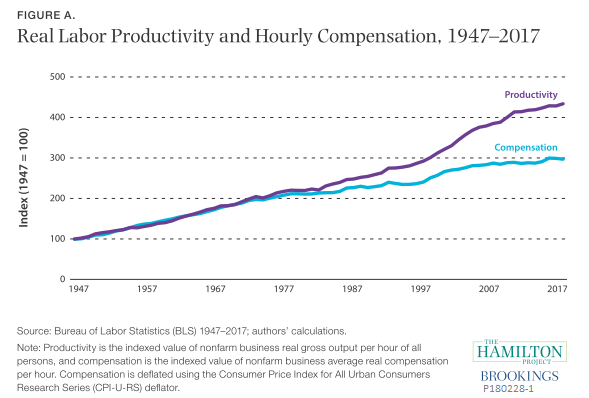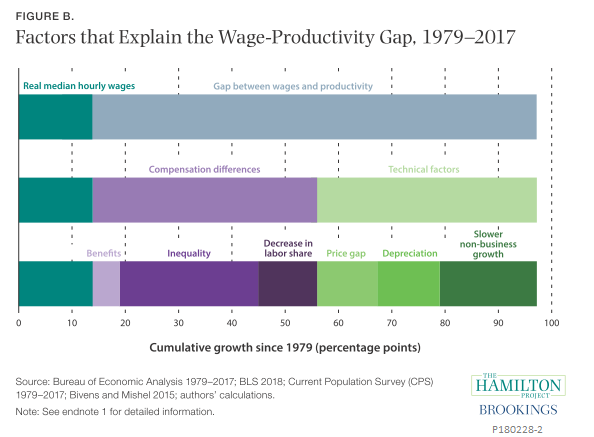One of the big economic questions of our time is why wages don’t keep up with productivity. Revitalizing Wage Growth, a new book edited by Jay Shambaugh and Ryan Nunn from the Hamilton Project at the Brookings Institution, investigates the issue in detail.
In the introduction, the book’s editors, together with Becca Portman, outline the problem. The following chart shows that the problem is relatively new. Up to the 1980s, productivity and compensation tracked closely. Since then, productivity has grown by 97 percent while total compensation has grown by just 19 percent, leaving a large gap.
The next chart shows where the 97 percent increase in productivity has gone, breaking it into seven components:
- Median wages have grown by 14 percent.
- Benefits have added 5 percentage points, raising the growth of total compensation to 19 percent.
- Wage inequality has increased, with average wages growing faster than median wages, explaining another 26 percentage points of the gap.
- The decline in the labor share of income relative to the share of capital contributes another 11 percentage points.
- Three technical factors explain the remaining 53 percentage points of the gap:
- Output prices, used as a deflator in calculating productivity, have grown more slowly than consumer prices, the deflator for wages.
- Theoretically, gross output should be adjusted for depreciation in calculating productivity, but it is not. If the share of depreciation in gross output were constant, that would not matter, but in fact, the importance of depreciation has increased.
- The productivity data reflect only nonfarm businesses, but the wage data are for the whole economy, including farms, government, and the not-for-profit sector. Nonbusiness productivity has grown more slowly than business productivity.
To some extent, then, the comparison of median wage growth with productivity growth is apples-to-oranges. Comparing average productivity for the whole economy (data for which is not directly available) with average total compensation, using the same deflator for both, and adjusting for depreciation, would leave a much smaller gap. Still, the falling labor share of income and increasing wage inequality are realities. The remainder of the Hamilton book outline a variety of policy strategies for dealing with wage stagnation.

